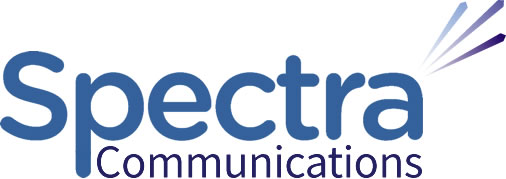
Are you using the ‘hidden gold’ in your clients’ stories? It’s a huge asset to capitalize on, and without it, you’ll be losing business. It will provide ammunition to boost your disappointing marketing results, and underpin your engineering or tech company in times ahead.
Trust is a precious commodity in business these days. Most people are over the hype and empty platitudes like “we are second to none”… “give the best service”… “offer top quality”, etc.
Prospects do due diligence on your company by looking for the real story from the ‘horse’s mouth’ such as independent reviews and customer feedback. These forms of third-party endorsement carry real ‘authority’, and have a huge impact on sales.
Client stories – the ultimate marketing ammunition
Client endorsement carries more weight than blowing your own trumpet, so why not let your clients’ promote you? While word-of-mouth referrals are the highest form of recommendation, you’ll only get a limited number of them – from clients’ personal contact with a handful of people.
Would you like more endorsements? The good news is you don’t have to wait for them to land on your plate. You can actually generate them whenever you want – assuming you’ve served a few clients well!
Case studies can add potent ammunition for your marketing by building a foundation of credibility and trust – especially when they are written in the clients’ own words.
‘Strategic’, not just a factual description
Most case studies that you read are factual outlines of projects, showing the client scenario and the work that was done. This may be of interest to the company, for internal newsletters, but not to prospective clients skimming a website for answers to their needs.
In order to know if you’re the go-to company for them, they need to see whether you have the required know-how, care about clients’ interests, and deliver solutions that work.
If you can capture stories in your clients’ own words and emotions, while asking the right questions to uncover company selling points – that’s ‘strategic’. It comes across as a natural and authentic story, while intentionally promoting your company.
Find the Right Person
It usually takes an objective outsider to get the client to open up and talk freely in depth – not just saying polite niceties or what they think you want to hear. It requires digging deep, beyond a Q & A session.
This person can step into both your shoes and your client’s, to get the whole story from both sides. As a ‘trusted ambassador’, they can build a bond with the client as ‘safe hands’ for your brand and relationship. If they have both technical and marketing understanding, they’ll know even more how to dig down to the ‘hidden gold’ and find the hidden potential in your company.
How to Do Interviews
The first thing for you to do is to identify a few happy ‘ideal’ clients and ask if they’d be willing to be interviewed.
Then, it usually requires 15 to 20 minute phone calls to hear their story, spot their pain points, issues, and interests, while exploring their deeper motivations and values. It also requires digging for evidence of your selling points, strengths, and points of difference in action. Then there’s the bottom-line benefits the client received, with hard figures if possible, such as % production improvement, labour hours reduced, or $ saved.
You might even get suggestions for improvement – a bit of ‘constructive criticism’ to lift your game.
Putting it together
From the interview notes, the story can be assembled, with enough factual details of the job so that readers can understand the situation, but no more. A few gaps may be discovered in the narrative, requiring some reading between the lines and putting the missing words in the client’s mouth, or emailing them with follow-up questions.
Then a draft is submitted to the client for feedback and any required amendments before approval. It’s a courtesy that reassures their trust, unlike some in the media who spin a story and publish it without the subject’s permission – not a good way to keep people on side!
The client’s amendments may be for factual inaccuracies, things not heard or interpreted correctly, sensitive areas they want kept confidential, or changes of mind.
When it’s all done, they should be thanked for their time – after all they are doing your company a favour. And it’s good to acknowledge the huge value of their story, to make them feel good about it all.
Spinoff marketing benefits
After a few case studies are done, patterns will emerge in client issues, motivations, and company strengths. This forms a solid foundation of market intelligence to inform content writing for your website, ads, brochures, or social media.
The whole exercise should also enhance client loyalty because it reminds them of the benefits they’ve received. They may not have been fully aware of the payoff until you probe for specific figures. One of my clients went back and counted his website enquiry emails and discovered more than a ten-fold jump!
How one business owner benefitted
Dominique Hawinkels, of JD-Data, improves client business productivity through database solutions that simplify processes, make life easier, and fit around the client’s way of doing things (unlike a lot of IT solutions).
I interviewed five of his clients, in different market segments, and discovered that the strengths they valued most about Dominique formed 3 ‘pillars’:
- Technical know-how to find the smartest and most efficient ways to enter, organize, and present data
- Empathy with clients to really understand their business and make it work uniquely for them
- Responsive service and hand-holding relationship
I used some of the benefits quoted by clients as potent attention-grabbing headlines in the case studies, such as: “slashing admin time… 33% productivity boost… suddenly at industry leading edge… information at our fingertips… exactly what we needed to operate effectively”.
This is what Dominique said about the benefit he gained from the whole exercise:
“David introduced us to the power of case studies through his client survey:
– How they allow you to connect deeply with your clients
– Get helpful feedback on your performance
– Gain a better understanding of their problems, key issues, and what they are looking for in you
– Demonstrate the reality of what you actually do for them (something we found very humbling)
– Not forgetting; something tangible that can be used in promoting your business
David helped us to see how our clients truly see us and what it is that they really value about us. Now that is gold – certainly more than we expected.”
The help you need to get the benefits for your business
If you’d like someone to organize case studies to take your marketing to the next level, contact me.
